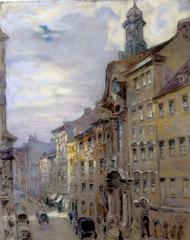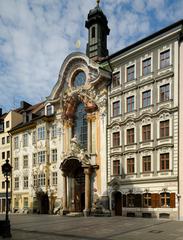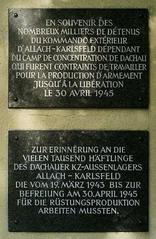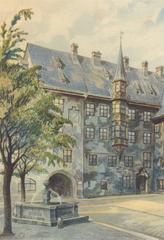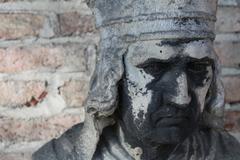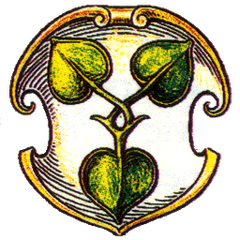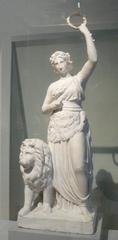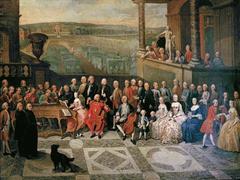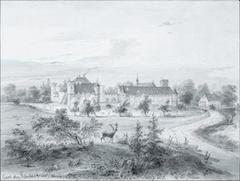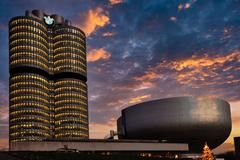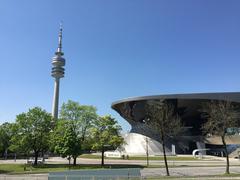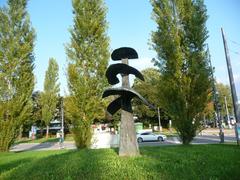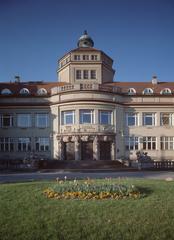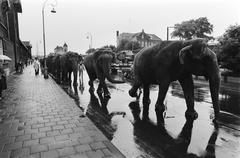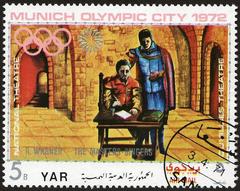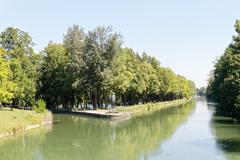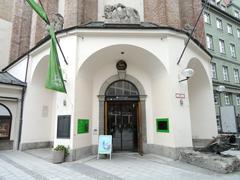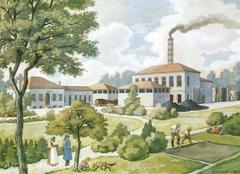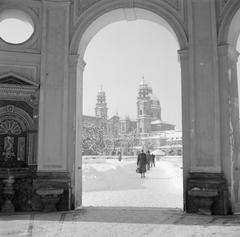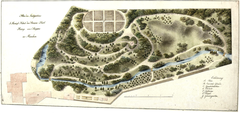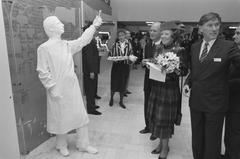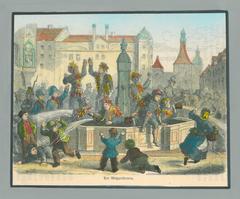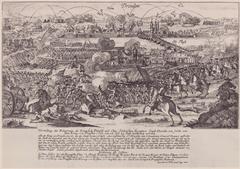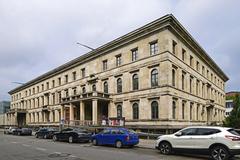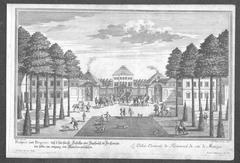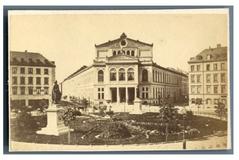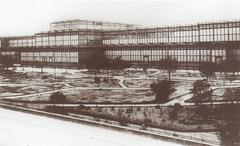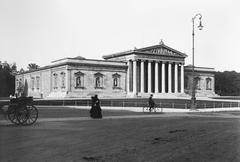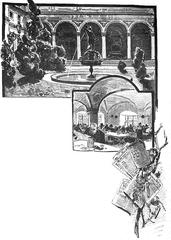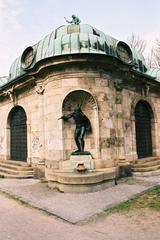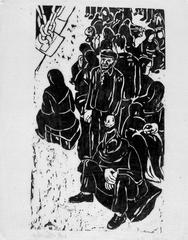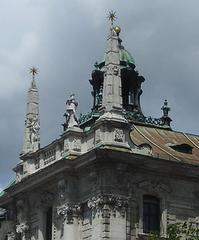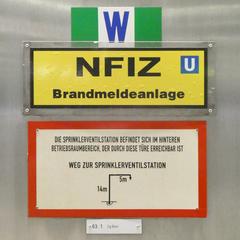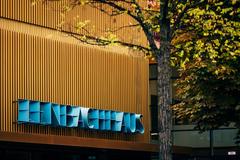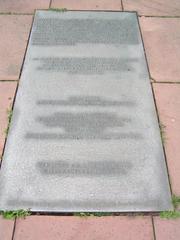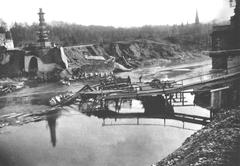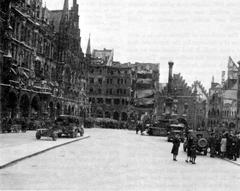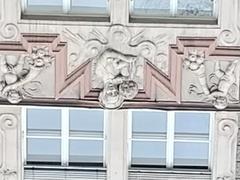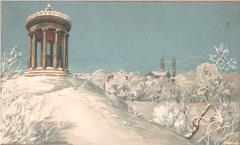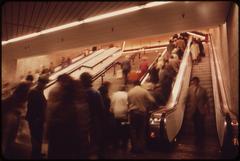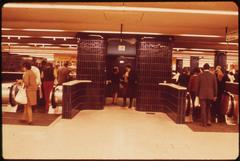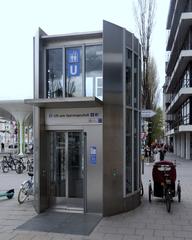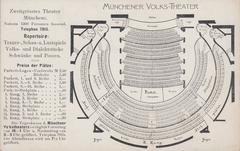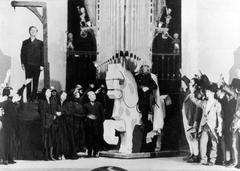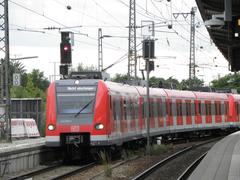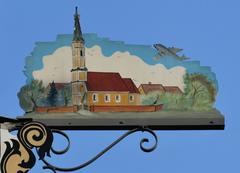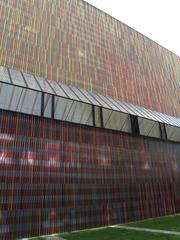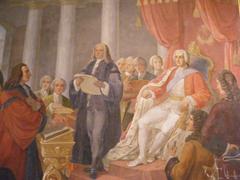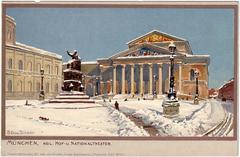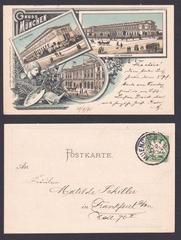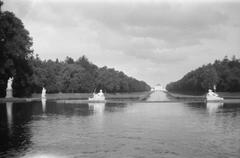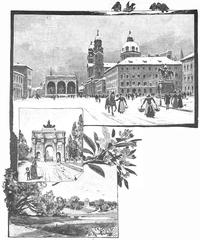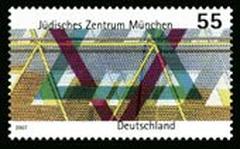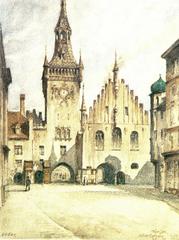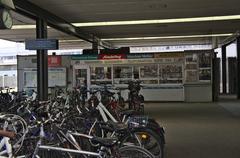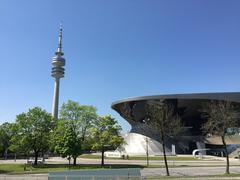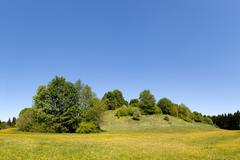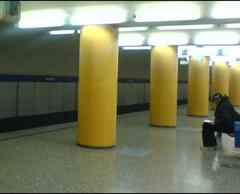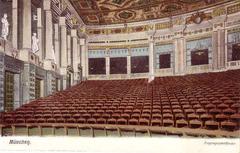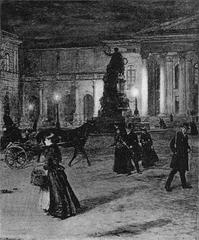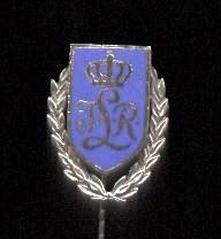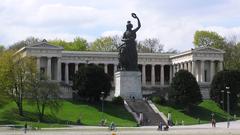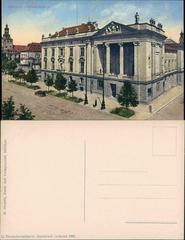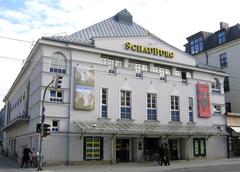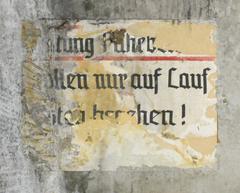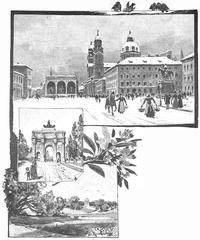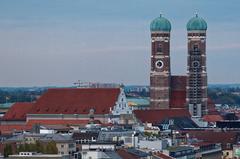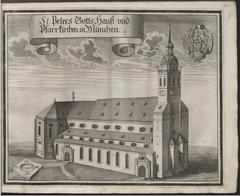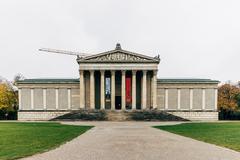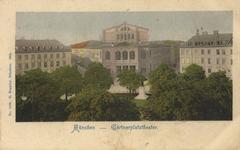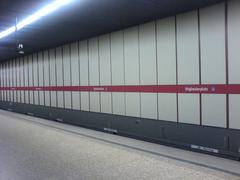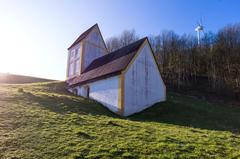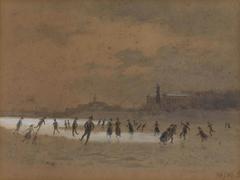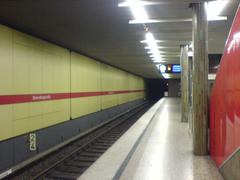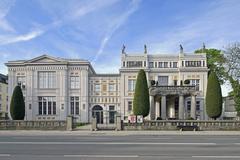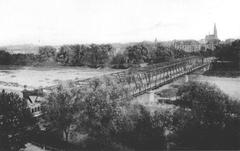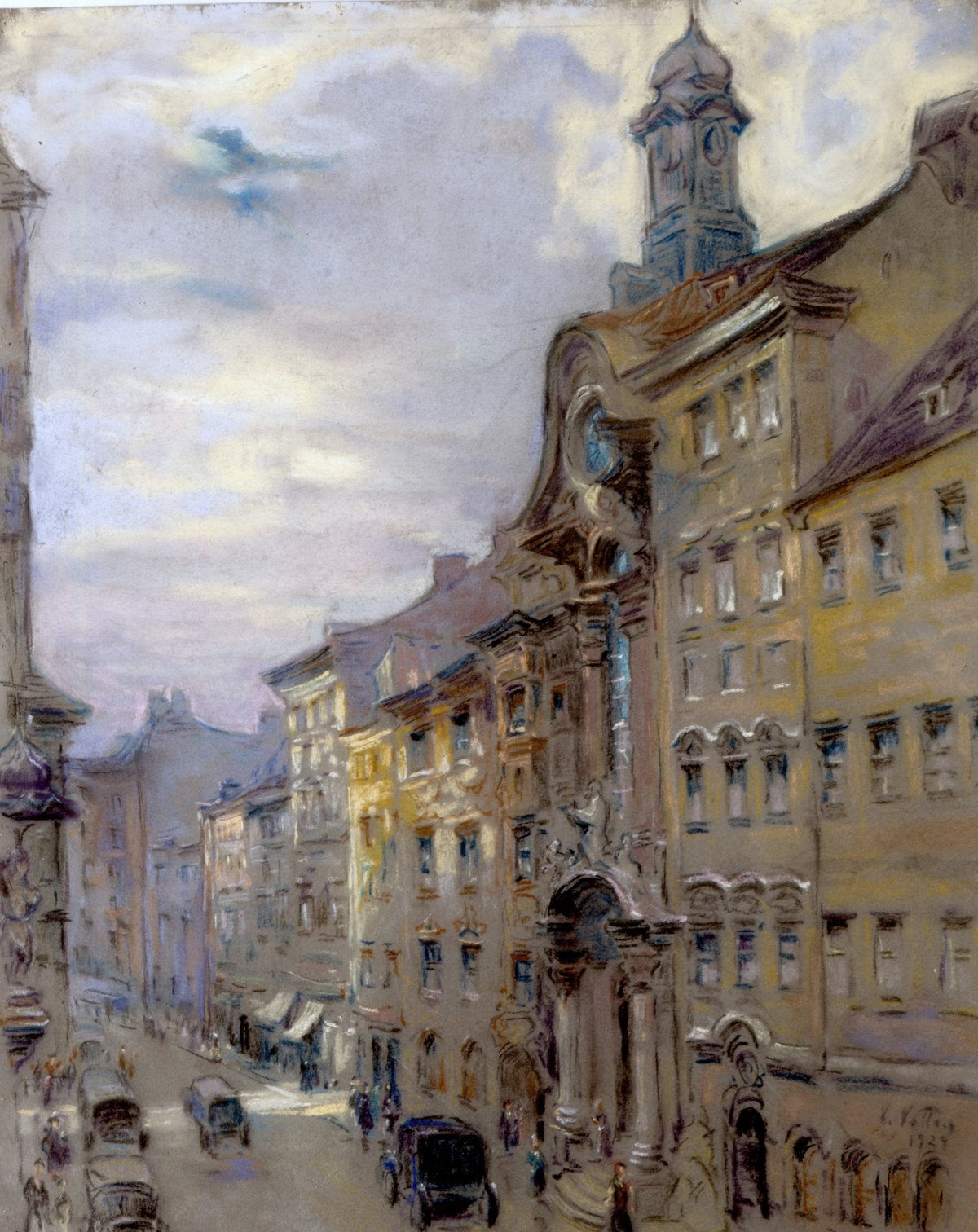
Visiting Sankt Johann Nepomuk Church: History, Tickets, and Travel Tips
Date: 18/07/2024
Introduction
Sankt Johann Nepomuk Church, more commonly known as the Asam Church, is a hidden gem nestled in the heart of Munich, Germany. This Baroque masterpiece, designed and constructed by the Asam brothers, Cosmas Damian and Egid Quirin, between 1733 and 1746, stands as an epitome of late Baroque artistic and architectural brilliance (source). The church is dedicated to Saint John of Nepomuk, a clergyman who became a martyr for his unwavering defense of the seal of confession (source). His story, deeply ingrained in the fabric of Catholic history, adds a layer of profound religious significance to this already remarkable edifice. Visitors are drawn not only by the church’s historical and religious importance but also by its awe-inspiring interior, which boasts a rich array of frescoes, stucco work, and sculptures that reflect the exuberance and emotional intensity of the Baroque period (source). In this comprehensive guide, we will explore the historical background, architectural marvels, and practical visitor information to ensure a memorable visit to this magnificent church.
Table of Contents
- [Historical Background and Religious Significance](#historical-background-and-religious-significancehistorical-background-and-religious-significance)
- [The Life and Legacy of Saint John of Nepomuk](#the-life-and-legacy-of-saint-john-of-nepomukthe-life-and-legacy-of-saint-john-of-nepomuk)
- [Martyrdom and the Path to Sainthood](#martyrdom-and-the-path-to-sainthoodmartyrdom-and-the-path-to-sainthood)
- [The Asam Church - A Baroque Masterpiece Dedicated to a Saint](#the-asam-church---a-baroque-masterpiece-dedicated-to-a-saintthe-asam-church-a-baroque-masterpiece-dedicated-to-a-saint)
- [The Religious Significance of Sankt Johann Nepomuk](#the-religious-significance-of-sankt-johann-nepomukthe-religious-significance-of-sankt-johann-nepomuk)
- [Visitor Information](#visitor-informationvisitor-information)
- [Visiting Hours](#visiting-hoursvisiting-hours)
- [Tickets](#ticketstickets)
- [Accessibility](#accessibilityaccessibility)
- [Guided Tours](#guided-toursguided-tours)
- [Photography](#photographyphotography)
- [Travel Tips and Nearby Attractions](#travel-tips-and-nearby-attractionstravel-tips-and-nearby-attractions)
- [Location](#locationlocation)
- [Nearby Attractions](#nearby-attractionsnearby-attractions)
- [Best Time to Visit](#best-time-to-visitbest-time-to-visit)
- [A Masterpiece of Southern German Late Baroque - Architectural and Artistic Brilliance](#a-masterpiece-of-southern-german-late-baroque---architectural-and-artistic-brilliancea-masterpiece-of-southern-german-late-baroque-architectural-and-artistic-brilliance)
- [A Symphony of Architecture - Exterior and Interior Harmony](#a-symphony-of-architecture---exterior-and-interior-harmonya-symphony-of-architecture-exterior-and-interior-harmony)
- [The Power of Illusion - Trompe l’oeil and Theatricality](#the-power-of-illusion---trompe-loeil-and-theatricalitythe-power-of-illusion-trompe-loeil-and-theatricality)
- [A Feast for the Senses - Artistic Highlights](#a-feast-for-the-senses---artistic-highlightsa-feast-for-the-senses-artistic-highlights)
- [A Personal Sanctuary - The Asam Brothers’ Legacy](#a-personal-sanctuary---the-asam-brothers-legacya-personal-sanctuary-the-asam-brothers-legacy)
- [Conclusion](#conclusionconclusion)
- [FAQ](#faqfaq)
- [References](#referencesreferences)
Historical Background and Religious Significance
The Life and Legacy of Saint John of Nepomuk
Sankt Johann Nepomuk Church, also known as the Asam Church, stands as a testament to the enduring legacy of its namesake, Saint John of Nepomuk. Born in Bohemia (present-day Czech Republic) around 1345, John of Nepomuk rose to prominence as a respected clergyman and eventually, the Vicar General of the Archdiocese of Prague (source). His unwavering faith and commitment to his vows, particularly the seal of confession, led to a clash with the powerful King Wenceslas IV. The king, suspicious of his wife’s fidelity, demanded that John reveal her confessions. John refused, citing the sacred oath of the confessional. This act of defiance enraged Wenceslas, who ordered John to be tortured and ultimately thrown from the Charles Bridge in Prague in 1393 (source).
Martyrdom and the Path to Sainthood
John of Nepomuk’s brutal death, considered a martyrdom for his defense of the sanctity of confession, resonated deeply within the Catholic world. Legends arose around his death, including the appearance of a halo of five stars above the spot where he drowned in the Vltava River. This imagery became closely associated with his iconography (source). His tomb in Prague’s St. Vitus Cathedral became a site of pilgrimage, and his popularity spread throughout Europe. In 1729, John of Nepomuk was canonized by Pope Benedict XIII, solidifying his status as a saint within the Catholic Church (source).
The Asam Church - A Baroque Masterpiece Dedicated to a Saint
The Asam Church in Munich, constructed between 1733 and 1746, stands as a powerful symbol of John of Nepomuk’s enduring legacy. Built by the Asam brothers, Cosmas Damian and Egid Quirin, as their private chapel and residence, the church is a masterpiece of the late Baroque style (source). The brothers, deeply devout Catholics, dedicated the church to John of Nepomuk, a saint whose story resonated with their own artistic and spiritual sensibilities. The church’s lavish interior, adorned with intricate stucco work, frescoes, and sculptures, reflects the exuberance and emotional intensity of the Baroque period, serving as a visual testament to the brothers’ faith and their admiration for the martyred saint (source).
The Religious Significance of Sankt Johann Nepomuk
Sankt Johann Nepomuk holds profound religious significance for several reasons:
-
Patron Saint of Confession: John of Nepomuk’s unwavering defense of the seal of confession led to his recognition as the patron saint of confessors, priests, and all those seeking the forgiveness of sins. His image, often depicted with a finger to his lips, symbolizes the sacred trust and confidentiality of the confessional (source).
-
Protector Against Calamities: John of Nepomuk is also venerated as a protector against floods and drowning, a belief stemming from the circumstances of his death. His image is often found on bridges, particularly in Central Europe, where he is believed to safeguard travelers and communities from water-related disasters (source).
-
Symbol of Faith and Integrity: John of Nepomuk’s refusal to break the seal of confession, even in the face of death, exemplifies the virtues of faith, integrity, and courage. His story serves as an inspiration to people of all backgrounds, reminding them of the importance of standing up for their beliefs, even in the face of adversity.
Visitor Information
To ensure a smooth visit to the Asam Church, here are some practical details:
Visiting Hours
The Asam Church is open daily from 9:00 AM to 6:00 PM. Note that visiting hours may be subject to change during religious services or special events.
Tickets
Entry to the Asam Church is free. Donations are appreciated to help with the church’s maintenance and preservation.
Accessibility
The church is wheelchair accessible. If you require any additional assistance, it is recommended to contact the church administration in advance.
Guided Tours
Guided tours are available upon request. These tours offer deeper insights into the church’s history, architecture, and religious significance.
Photography
Photography is allowed inside the church. However, visitors are requested to be respectful and avoid using flash.
Travel Tips and Nearby Attractions
Location
The Asam Church is located at Sendlinger Str. 32, 80331 Munich, Germany. It’s easily accessible by public transport, including the U-Bahn and trams.
Nearby Attractions
While visiting the Asam Church, consider exploring other nearby historical sites such as Marienplatz, the Frauenkirche, and the Viktualienmarkt. These attractions offer a glimpse into Munich’s rich history and vibrant culture.
Best Time to Visit
To avoid crowds, it is recommended to visit early in the morning or later in the afternoon. Weekdays are generally less busy than weekends.
A Masterpiece of Southern German Late Baroque - Architectural and Artistic Brilliance
A Symphony of Architecture - Exterior and Interior Harmony
From the outside, the Asam Church presents a narrow, almost compressed facade, wedged between buildings on Sendlinger Straße. This constraint, however, became the catalyst for the Asam brothers’ creativity. The facade, designed by Egid Quirin, a renowned sculptor and plasterer, transcends its physical limitations to create a dynamic and expressive statement. Stepping inside, visitors are enveloped in a world of sensory overload. The interior, a masterpiece of Cosmas Asam, a master painter and decorator, explodes with color, texture, and light. The relatively small space, measuring just 22 meters long and 8 meters wide, is maximized through a clever architectural layout and an abundance of artistic embellishment.
The Power of Illusion - Trompe l’oeil and Theatricality
One of the most striking features of the Asam Church is the masterful use of trompe l’oeil, a technique that employs realistic imagery to create an optical illusion. Cosmas Asam, through his masterful frescoes, dissolves the boundaries between the real and the imagined. Columns appear to soar upwards, architectural elements seem to protrude into the viewer’s space, and heavenly scenes open up overhead, creating a sense of awe and wonder. The church’s interior is a carefully orchestrated theatrical experience. The play of light and shadow, accentuated by the strategically placed windows and the use of gold leaf, adds to the drama. The visitor’s gaze is drawn upwards towards the heavens, culminating in the magnificent fresco depicting the life of St. John of Nepomuk, the church’s patron saint.
A Feast for the Senses - Artistic Highlights
- The High Altar: The focal point of the church, the high altar, is a masterpiece of Baroque exuberance. Designed by Egid Quirin, it features intricate sculptures, twisted columns, and a dramatic depiction of the martyrdom of St. John of Nepomuk.
- The Frescoes: Cosmas Asam’s frescoes are undoubtedly the highlight of the church. Covering almost every inch of the ceiling and upper walls, they depict scenes from the life of St. John of Nepomuk, the Virgin Mary, and other biblical figures. The frescoes are notable for their vibrant colors, dynamic composition, and masterful use of light and shadow.
- The Pulpit: Crafted by Egid Quirin, the pulpit is a masterpiece of Baroque sculpture. Supported by a life-sized figure of a Turk, symbolizing the triumph of Christianity over Islam, the pulpit features intricate carvings and a dramatic depiction of the Conversion of St. Paul.
- The Organ: Built by Johann Baptist Gunetzrhainer, one of the leading organ builders of the time, the organ is a work of art in its own right. Its ornate case, designed by the Asam brothers, blends seamlessly with the church’s overall aesthetic.
A Personal Sanctuary - The Asam Brothers’ Legacy
The Asam Church was more than just a public place of worship; it was a personal sanctuary for the Asam brothers. Cosmas Asam lived in a house adjacent to the church, connected by a passageway that allowed him to observe the Mass unseen. This personal connection is evident in the meticulous attention to detail and the deeply personal nature of the artwork. Today, the Asam Church stands as a testament to the artistic genius of the Asam brothers and the splendor of the Southern German late Baroque style. It is a place where architecture and art converge to create a truly awe-inspiring experience.
Conclusion
A visit to Asam Church is a journey into the heart of Baroque artistry and architectural ingenuity. Whether you are an art enthusiast, a history buff, or simply a curious traveler, the Asam Church promises an unforgettable experience. Plan your visit today and immerse yourself in the beauty and history of this Munich treasure.
FAQ
Q: What are the visiting hours for Asam Church?
A: The Asam Church is open daily from 9:00 AM to 6:00 PM.
Q: How much do tickets for Asam Church cost?
A: Entry to the Asam Church is free. Donations are appreciated.
Q: Is the Asam Church wheelchair accessible?
A: Yes, the church is wheelchair accessible.
Q: Are guided tours available at the Asam Church?
A: Yes, guided tours are available upon request.
Q: Can I take photos inside the Asam Church?
A: Yes, photography is allowed, but please avoid using flash.
